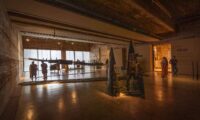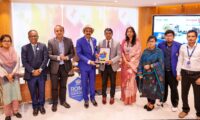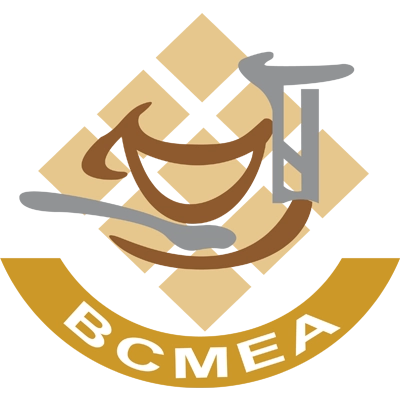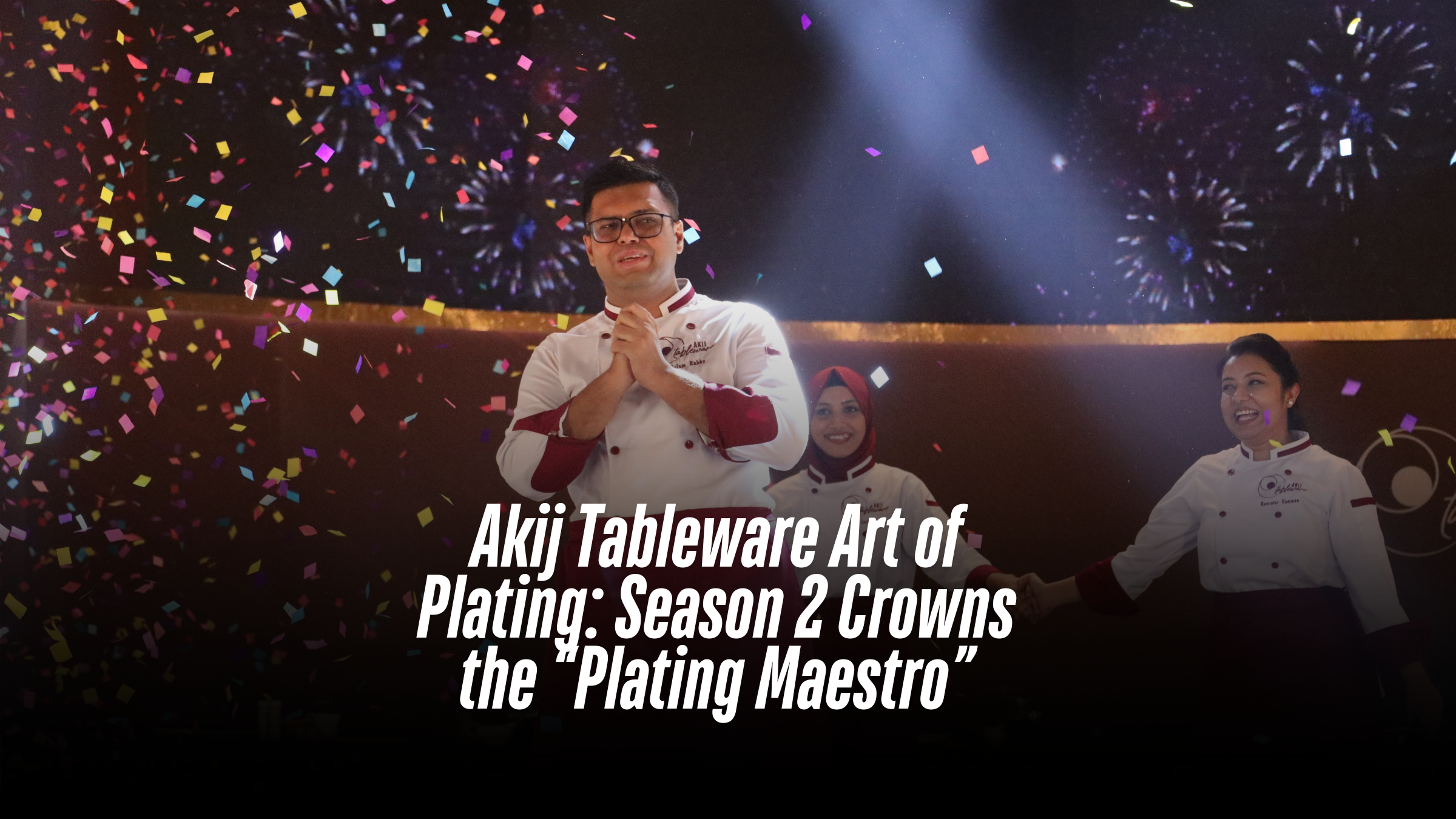
Body and the Map: Of wounds and Hope
Beautifully curated by Sharmillie Rahman, the exhibition “Body and the Map” took place on Bengal Shilpalay between 15 and 28 December, 2024. By engaging viewers to contemplate the interaction of power, identity, and transition, “Body and the Map” was more than just another decent exhibition that had the July-August uprising as its subject matter; the exhibition not only acted as a stark reminder about what must not be forgotten but also intrigued the audiences to introspect. Consisting of the artworks of ten multidisciplinary artists, many of whom were active participants in the mass uprising that overthrew a long-standing regime, “Body and the Map” was a riveting look at societal upheaval in the aftermath of that student-led mass rebellion. The show, based on the collective memory of Bangladesh’s last July-August, is both a reflection and a debate about the force of resistance, the weight of trauma, and the possibility of change. Their work delves into the complicated reality of a country dealing with its old and fresh scars and the tiers of collective psychological state of the mass after the newfound independence. The participating artists were A. Asan, Afsana Sharmin, Ashang Mong, Farzana Ahmed, Mong Mong Shay, Niazuddin Ahmmed, Palash Bhattacharjee, Rasel Rana, Razib Datta, and Ripon Saha. The July-August uprising was characterised by an unprecedented feeling of urgency, as residents defied persecution to demand justice, equality, and dignity. However, the road to liberation came at a high cost, with bodies mutilated, lives lost, and a collective psyche permanently transformed. The show explores this dichotomy, emphasising the body as both a personal and societal vessel for history, pain, and resilience. The artworks that were adorned by the gallery space delve deeply into the concept of the body as a source of memory and resistance. Whether through physical depictions or abstract interpretations, the ten artists highlighted how the human body bears the weight of institutional injustice and governmental violence. The visual narratives starkly remind us about biopolitical disposability, demonstrating how individuals became victims of normalised violence during the authoritarian system. The relationship between body and land appears as a repeating pattern, emphasising identities defined by culture, religion, race, and gender, all of which intersect within a nation’s sovereign borders. However, these links are loaded with tension, since the scars of authoritarian authority and systematic impunity are etched on both the body and map. In the aftermath of this historic movement, “Body and the Map” illustrated the dialectics of trauma and renewal, hopelessness and optimism. The exhibition stressed the importance of open discourse and the reframing of identity and government as centralised power disintegrates and something new emerges. Despite recollections of terror, violence, and loss, the artworks elicit a cautious hope. The collective body politic, though scarred, remains resilient, signalling a determination to redefine itself and the map it inhabits. Written by Shahbaz Nahian
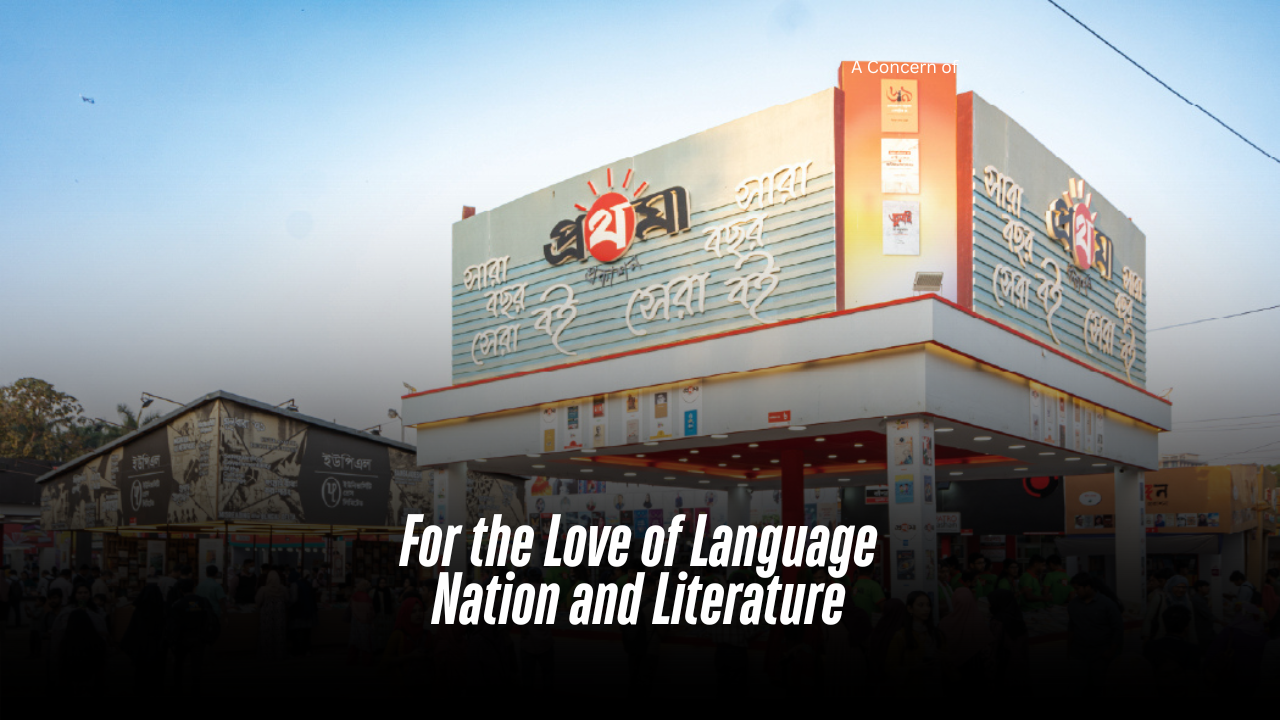
For the Love of Language Nation and Literature
With a new sun, new authorities emerge, revitalising familiar spaces. The 40th Ekushey Book Fair 2025, themed “July Mass Uprising: Building a New Bangladesh (New Bangladesh Deconstruction),” featured over 700 publishing houses at the premises of Bangla Academy and Suhrawardy Udyan. The month-long fair was inaugurated by Dr. Muhammad Yunus, the Chief Adviser of the interim government on 01 February. The Amar Ekushey Book Fair, a fundamental element of Bangladesh’s literary heritage, returned this year with a striking and visually captivating transformation. Uniquely crafted stalls add an architectural charm that sets this year’s fair apart from the previous editions. Visitors are greeted with the richness of literature and an impressive array of architecturally designed stalls, each presenting a unique identity. The influence of the new government is evident in the fair’s structured setup, where each stall showcases unique aesthetics through bold shapes, intricate exteriors, and thematic designs. When visiting this year’s Ekushey Book Fair, the crowd was astounding. People of all ages turned the fair into a true celebration. The entrance was bustling with various food vans, and women and children were all dressed up. The Book Fair has never been this festive and crowded in recent years, even on working days. Whether for recreation or out of love for books, the fair should continue in this spirit for eternity, celebrating Bangla language and literature. Readers and visitors took a moment to admire the aesthetics embraced by publishers who dedicated extra time and thought to beautifully decorate their pavilions. One of the highlights of this year’s book fair is the pavilion by Iti Prokashon, titled ‘Ziar Bari’ (Zia’s House), named after Ziaur Rahman, a prominent army chief, freedom fighter and politician who served as the sixth President of Bangladesh from 1977 to 1981. A key figure in the country’s War of Independence, Zia’s name has often been sidelined in public discourse and textbooks due to the agendas of the previous autocratic regime. In contrast, Onnodhara Prokashon transformed its pavilion into a representation of the Bangladesh Parliament House. The sight of these two distinct symbols coexisting on the same ground truly captivated visitors. Afsar Brothers gave their pavilion a harmonious blend of heritage and functionality, making it an inviting space for book lovers while paying homage to Bengal’s rich architectural traditions. The structure follows a half-timbered design with exposed wooden beams and white infill panels, resembling classic Bengali rural or zamindari house styles. Other notable mentions include Bishwa Shahitto Kendro, which transformed its pavilion into a two-story BRTC bus structure, paying homage to its Moving Library. Bhashachitro Publications adopted a minimal, monochrome palette, giving the pavilion a simple yet elegant look. Bengal Books chose a wooden pavilion, creating a soothing atmosphere for buyers with its well-decorated books and thoughtful lighting. The Puthiniloy stall featured a book-structured roof, while Gronthik designed its stall to resemble a mud house with bamboo. Shaishab Prakash’s stall is shaped like a whimsical castle, inviting readers into a world of children’s literature. These creative designs add a unique visual and conceptual dimension to the fair, making it not just a place for purchasing books but also for cultural and artistic appreciation. The best pavilion design goes to Batighar, designed by artist Shahinur Rahman. The triangular front featured a stained-glass-like panel with motifs from Nakshi Kantha and Patachitra, reflecting Bengali folk art. Inside, a red dome element, inspired by a Chhoto Sona Mosque, highlighted local heritage. The steeply pitched roof with exposed red clay tiles resembled traditional Bangladeshi huts. For its artistic excellence, Batighar won the Kayum Chowdhury Memorial Award for best pavilion in this year. Sadly, the kids’ section lacked vibrancy, with limited space for children to explore and freely roam around. However, a few stalls, including Shoishob Prokash, Mayurpankhi, and EKRI MIKRI, did a decent job of capturing the attention of young visitors. Shoishob Prokash transformed its stall into a castle-like structure, Mayurpankhi adhered to its palette with subtle adjustments, and EKRI MIKRI added a creative touch by placing a horse for children to play on, making the stall an engaging and fun experience for the little ones. This year, the fair included 66 more stalls than the previous year. 99 publishers were located at the Bangla Academy premises and 609 at the Suhrawardy Udyan area. There were 37 pavilions in total, with one at the Bangla Academy premises and 36 at Suhrawardy Udyan. The Little Magazine Corner had been set up in Suhrawardy Udyan, with 130 stalls. In the children’s corner, 74 institutions had been allocated. The fair also featured daily seminars and cultural programmes in the evening, and a special “Children’s Hour” held every Friday and Saturday from 11am to 1pm. As part of the Amar Ekushey celebrations, various children’s competitions, including art, recitation, and music, were organised. The fair had four entrance points: TSC, Doyel Chattar, MRT station, and Engineering Institute. Director General of Bangla Academy Mohammad Azam and Member Secretary of the Fair Management Committee Sarkar Amin said to Ceramic Bangladesh that the fair was entirely polythene and smoking-free, with security provided by the Police, RAB, Ansar, and various intelligence personnel. All participating institutions sold books on a 25% commission basis. The academy published 43 new books and reprinted 41 books for this fair. A total of 3,300 new titles were published in this Book Fair 2025 and Bangla Academy stall alone sold books worth Tk 61 lakh. Several awards were presented at the fair, including the Chittaranjan Saha Memorial Award for the best publisher, the Munir Chowdhury Memorial Award for artistic excellence, and the Rokanuzzaman Khan Dadabhai Memorial Award for children’s literature. These awards recognise the contributions of publishers and authors to the literary and cultural landscape of Bangladesh. Written By Fariha Hossain
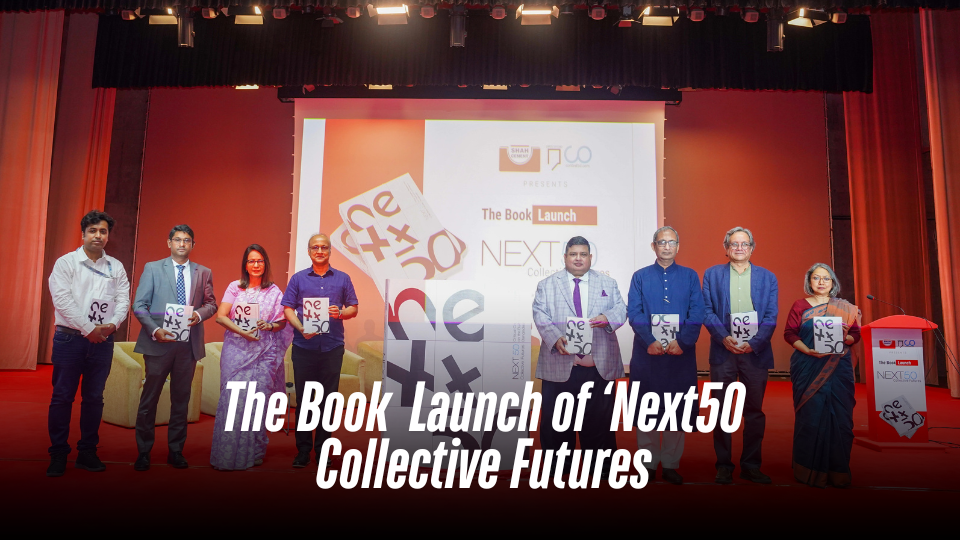
The Book Launch of ‘Next50: Collective Futures
A significant milestone in shaping Bangladesh’s future was marked today with the official launch of Next50: Collective Futures at BRAC University’s Multipurpose Hall. This landmark publication—the largest edited volume on Bangladesh’s built environment—brings together 81 authors, including many from the Bangladeshi diaspora, to explore the nation’s next five decades of progress, innovation, and connectivity. Spanning 49 chapters across nine major themes, the book examines urban and rural transformation, infrastructure, climate resilience, housing, governance, and technological innovation. Written in accessible language for policymakers, practitioners, and the general public, it bridges cutting-edge research with real-world impact, making complex ideas actionable for those shaping the nation’s future. The event was attended by some of Bangladesh’s most prominent architects, planners, and urbanists from both academia and professional practice. Distinguished guests included Dr. Syed Ferhat Anwar, Vice-Chancellor of BRAC University, and Mohammad Azaz, Administrator of Dhaka North City Corporation, who underscored the urgency of visionary thinking in driving sustainable and inclusive development. The program featured a compelling book introduction by Professor Fuad H. Mallick, Editor-in-Chief of Next50 and Dean of the School of Architecture and Design at BRAC University, followed by an insightful review from Dr. Mohammed Zakiul Islam, Professor at BUET, who highlighted the book’s interdisciplinary approach and its relevance to Bangladesh’s rapidly evolving urban landscape. Adding to the discussions, key stakeholders, including representatives from Shah Cement, reflected on the private sector’s role in shaping the built environment. The event concluded with remarks from the book’s executive editors, Dr. Tanzil Shafique and Dr. Saimum Kabir, who emphasized the collaborative effort behind the publication and its potential to influence future policies and practices. Shah Cement also expressed interest in future collaborations. Beyond the discussions, the launch served as a key networking platform for scholars, policymakers, and industry leaders, fostering dialogue and collaboration on the country’s long-term development. Attendees engaged in meaningful conversations over Iftar and dinner, reinforcing the event’s role in strengthening professional and intellectual ties. Organized by Open Studio and Context BD, with support from Shah Cement, the event also reached a wider audience through a live stream, ensuring broader engagement with the book’s mission.







